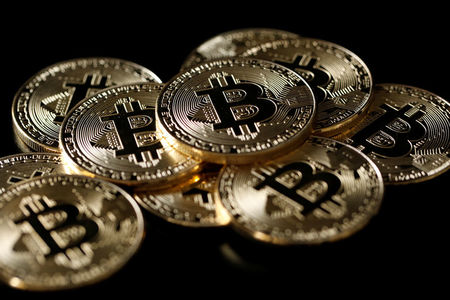Business
Why New DTCC Directive Is Both Bullish and Bearish By U.Today


U.Today – In a recent ruling, the Depository Trust and Clearing Corporation (DTCC) made a decision against exchange-traded funds (ETFs) that are exposed to or any other cryptocurrencies.
DTCC plans to change collateral policy
Consequently, the corporation has earmarked April 30 as the day to implement changes to its collateral value for these special securities during its annual line-of-credit facility renewal.
DTCC sees this as an avenue to revolutionize position values in the collateral monitor. For spot Bitcoin ETFs like BlackRock (NYSE:)’s IBIT, Fidelity Investment’s FBTC and other crypto ETPs, this would result in a 100% reduction in their collateral value.
Cryptocurrency enthusiast K.O. Kryptowaluty believes that this new development applies to only inter-entity settlement within the line of credit system. He further explained that the use of crypto ETFs for lending and as collateral in brokerage activities will continue without any consequences.
However, he pointed out that it is highly dependent on individual brokers’ risk tolerance.
DTCC’s collateral policy affects ETF investors
According to Autism Capital, DTCC’s announcement could potentially translate to less liquidity but also more risks for spot crypto ETF investors.
Looking on the bright side, such a decision may equally contribute to mitigating the negative interference of Wall Street companies in the growing crypto ETF niche. Only time will tell how it turns out for investors and other parties involved.
Business
Caramelized garlic steak in salads and protein bowls raises carbon-neutral concerns


Salad chain Sweetgreen is adding steak to its menu, an announcement that led to strong reactions online, with customers questioning how that would impact the company’s carbon neutral plans.
Founded in 2007 and known as a fast-casual spot serving salads and bowls, Sweetgreen says it will be carbon neutral by 2027 — meaning it plans to offset its own emissions by putting in place strategies that also remove carbon from the atmosphere.
But beef production is incredibly resource-intensive and a contributor to climate change. It’s the largest agricultural source of greenhouse gases globally, emitting massive amounts of methane into the atmosphere, and requires extensive land use.
Sweetgreen’s rationale for the controversial caramelized, garlic-flavored steak menu addition this week includes using regenerative farming. The chain also says carbon offsets are part of its pledge to combat climate change and reduce its greenhouse gas emissions.
A Sweetgreen spokesperson referred request for comment to its menu expansion details.What is regenerative agriculture?
Regenerative agriculture means farming and ranching in a way that not only produces food from a landscape, but also sees that landscape improve ecologically, said Jason Rowntree, co-director of the Michigan State University Center for Regenerative Agriculture.
This means “minimizing disturbance, keeping ground covered,” Rowntree said, “improving biodiversity below and above ground through adding animals to your cropping systems or enhancing biology below ground.”
Many grocery chains and restaurants are starting to look to regenerative agriculture for animal proteins, grains and fruits and vegetables while meeting climate goals. Starbucks cited regenerative agriculture as one way it aims to slash its carbon, water use and waste in half by 2030. Chipotle and Burger King have also dabbled in it.
“It’s all in what you do and how you implement it,” said Allen Williams, a farmer and founder of agriculture consultancy Understanding Ag. “It allows for the repair, rebuilding and restoration of our ecosystems — and that’s critically important if we want to mitigate climate change.”
Some experts question whether regenerative agriculture can offset all emissions from beef production in particular.What are carbon offsets?
Companies, including those in dining, also buy carbon offsets. They purchase “credits,” as part of a voluntary and unregulated market for projects that claim to absorb carbon dioxide that otherwise would’ve happened.
These offsets are an effort to cancel out one’s own carbon dioxide pollution. But it isn’t an exact science.
Though companies including Sweetgreen should be applauded for their efforts, “We all know that the offsets schemes over the last few years have been really problematic, to say the least,” said Jonathan Foley, executive director of climate nonprofit Project Drawdown.What can be done instead?
Even if a chain employs productive regenerative agriculture and offsets, experts say its use of plastic, paper or non-renewable energy could negate those practices.
So the priority should be focusing on a restaurant chain’s whole carbon footprint, fostering and improving landscapes that are more resilient for food security and improving water cycling, experts say.
“At the end of the day,” Rowntree said, “I think these challenges we’re going to see with aridity, with heightened intensity of rain events followed by longer periods of drought are probably agriculture’s biggest challenge moving forward.”
Business
Money market funds yielding more than 5% won’t last. Where to put idle cash
Business
Bank 'optimistic' as it edges closer to summer cut

Its comments came as UK interest rates were left unchanged at a 16-year high of 5.25%.
Source link
-

 African History4 months ago
African History4 months agoBlack History Facts I had to Learn on My Own pt.6 📜
-

 African History4 years ago
African History4 years agoA Closer Look: Afro-Mexicans 🇲🇽
-

 African History1 year ago
African History1 year agoPROOF AFRICAN AMERICANS AIN'T FROM AFRICA DOCUMENTED EVIDENCE
-

 African History2 years ago
African History2 years agoHow Did Normal Medieval People Survive Winter? | Tudor Monastery Farm | Chronicle
-

 African History3 years ago
African History3 years agoThe Entire History of Africa in Under 10 Minutes – Documentary
-

 African History3 years ago
African History3 years agoWhat happened to the many African Kingdoms? History of Africa 1500-1800 Documentary 1/6
-

 African History2 years ago
African History2 years agoAFRO MEXICO: Black History In Mexico!
-

 African History1 year ago
African History1 year agoA Black African King in Medieval European Art
























